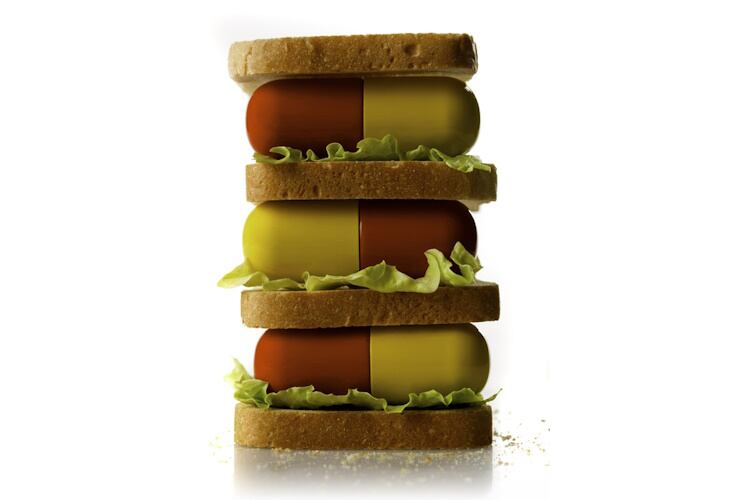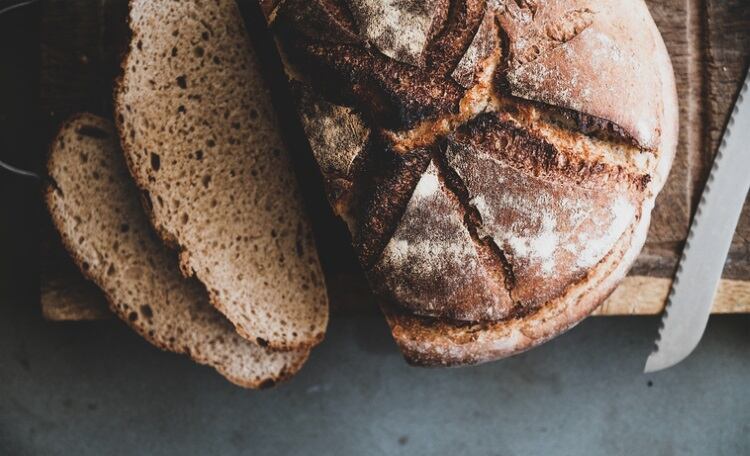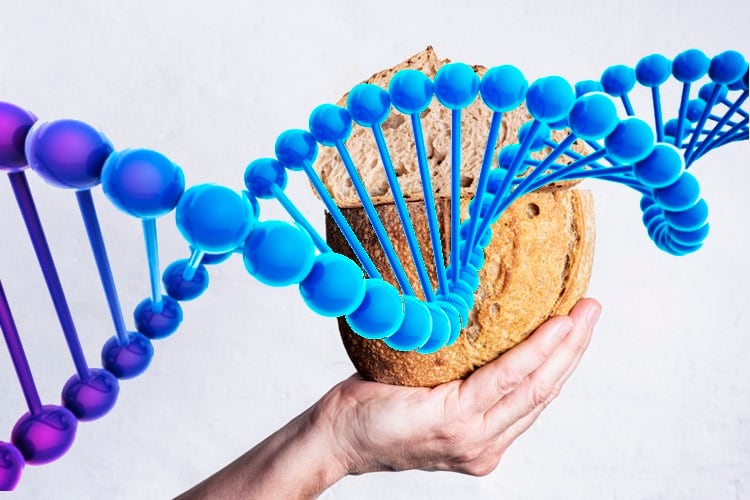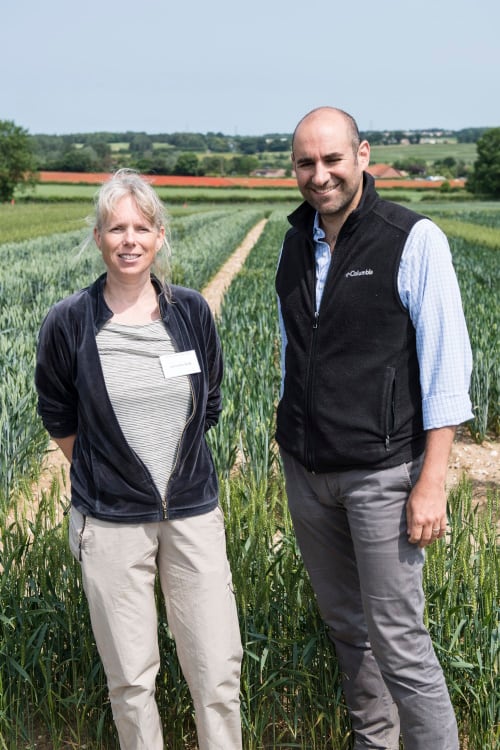
The practice of fortifying wheat flour began in post-WW2 Britain when the rise of dietary deficiencies – due to rationing and shortages – spurred on the need to strengthen the diet of the nation. Deficiencies in micronutrients have persisted and can cause a slew of long-term health problems, placing additional strain on the country’s already overstretched national health service.
The UK’s Bread and Flour Regulations 1998 then made it mandatory to add iron, calcium, thiamine (vitamin B1) and niacin (vitamin B3) to white and brown flour and today, all bread sold in the UK – other than wholemeal – must be fortified.
Taking the concept further and although still far from being available commercially, flour from wheat genetically modified to contain more iron comes with a slew of benefits for millers, bakers and consumers.
What is fortification?

Wheat grain is rich in iron, however, most of it is lost when the germ and bran are removed during the milling process. White flour usually contains between 5mg and 8mg of iron per kilogramme, which is low for human nutrition.
In the UK, there is a legal requirement to bring the iron concentration up to 16.5mg/kg, added in the form of iron powder or iron salts.
Using genetic modification, researchers at the John Innes Centre have developed a wheat line that contains 20mg/kg of iron in milled white flour, thus negating the need to add iron as an additional ingredient. The iron in this flour is also bioavailable, meaning it’s in a form that can be absorbed and used by the human body.
In this study, the iron is genetically introduced to the wheat’s endosperm, which is retained in the milling of white flour. Despite a stronger awareness of health, the majority of consumers today still prefer breads made from white flour.
This suggests that products made from the biofortified flour could contribute to improved iron nutrition.
Opening the conversation for fortification
Iodine is just as important as iron in reducing adverse pregnancy outcomes (low birth weight, prematurity and foetal brain development).
While it’s been a requirement in Australia and New Zealand since 2009 that commercial bread is made with iodised salt, it’s still not law in the UK or US.
However, to celebrate National Birth Defects Month, the American Bakers Association (ABA) has instigated a conversation around the fortification of iodine.
You can join in on the conversation with the ABA and the Grain Foods Foundation on social media to add your message that reinforces the important of fortification and also that essential nutrients come from enriched grain products. Additionally, use the hashtags #BirthDefectsAwarenessMonth #GetGrains #AmericanBakers #MyPlate to spread the word.
Why a field trial?
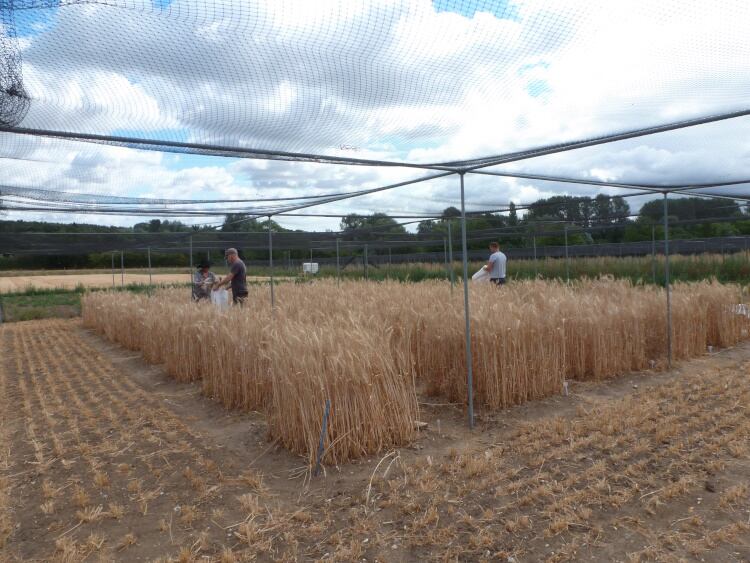
Following successful trials of high iron wheat grown under greenhouse conditions, the scientists have applied to Defra to embark on a small-scale field experiment in 2024.
Under the supervision of group leaders Prof Janneke Balk and Prof Cristobal Uauy, the trial – taking place on 50m2 of land at the John Innes Centre in Bawburgh, Norwich – is different for two reasons.
“The first is it is specifically looking at increasing iron in the endosperm of the grain and second, the wheat was generated using modern gene technology,” Prof Balk told Bakery&Snacks.
Several generations of this wheat have been successfully grown in environmentally controlled growth chambers, now the test lies to see if the same traits will be present in wheat grown in the field, exposed to weather and regular UK pathogens.
“The most common traits tested in wheat field trials are yield and disease resistance. Only recently have wheat breeding companies become interested in mineral micronutrients,” said Prof Balk, adding Defra has given the green light for three years of field trials.
“We aim to plant mid-March – which is the usual planting time for spring wheat – and harvest end of July.”
To GM or not to GM?
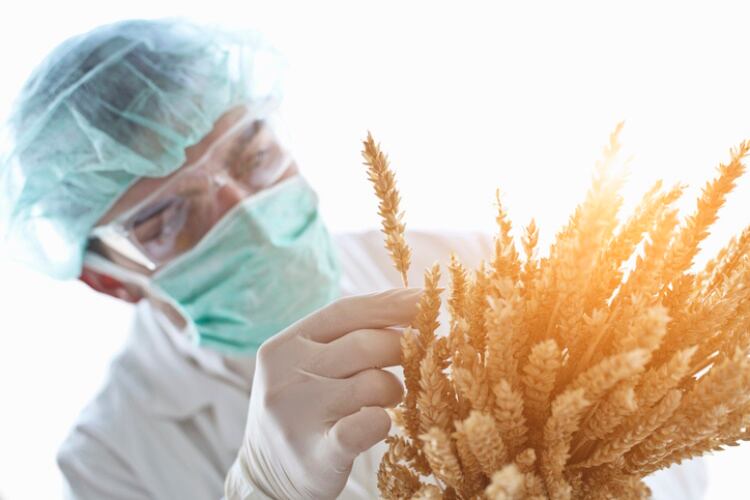
For the study, DNA (or genes) are isolated from wheat, rice and maize – which are closely related plant species – and placed behind a regulatory piece of DNA that is inserted into the wheat genome.
The previous trial tested a piece of DNA that encodes an iron transporter protein (called VIT2 for Vacuolar Iron Transporter 2), which increases the iron content of white flour, but not the total amount of iron in the grain. The addition of a second piece of DNA (an enzyme called NAS2 for NicotianAmine Synthase) aims to increase the total iron in the grain, along with the total zinc content.
Additional pieces of DNA are added to help the insertion of the regulatory DNA, but these are not essential in increasing iron and are later removed.
Genetic modification is a highly contentious issue, with scientists and the public on either side of the opinion scale. Prof Balk, however, is not deterred.
“Having conducted GM field trials and meetings with the public, we find that most people are positive about the benefits that GM crops can provide. In particular for iron. Many women take iron supplements, which have unpleasant side effects. People I have spoken to told me they would much rather eat iron-biofortified bread and biscuits,” she said.
There are no GM crops currently grown commercially in the UK, but a small number are undergoing field trials at research institutes.
“Because of the onerous paper trail, researchers are moving away from GM and are developing gene-edited (GE) crops instead,” she admitted, noting the limitations in completely dropping GM.
“Not all desirable traits can be achieved using GE.”
Taking the GM wheat into the field does come with its own challenges, particularly the cross-contamination with non-GM wheat.
“Wheat is self-pollinating, so, in theory, pollen could move with the wind and cross-pollinate wheat within a few metres,” Prof Balk told us.
“One of the conditions for the GM field trials stipulates a distance of 20 metres with non-GM wheat for this reason. In addition, we grow a so-called pollen barrier of normal wheat around our trial. This will capture any wind-borne pollen. Shortly after flowering and before the grain can development, the plants of the pollen barrier will be removed and destroyed.”
The wheat will also be grown under a net to prevent birds from eating the seeds and the site regularly visited by trained personnel to monitor and prevent any adverse environmental impacts.
“In our previous field trials, there were no effects on the environment or human health.”
The fine art of supplementation
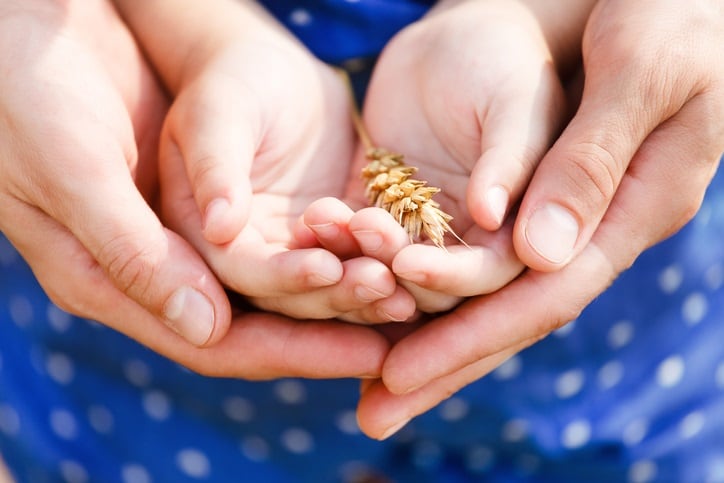
Prof Balk said the primary reason to develop the high iron wheat line is to help increase iron intake through plant-based eating – highly trendy – without resorting to chemical iron supplementation.
According to the National Diet and Nutrition Study, adolescent girls have on average an iron intake that is 25% below the recommended intake, while 54% of women aged 19-64 are below that. In fact, the intake of iron shows a declining trend over the past decade.
While the fortification practice was enshrined in UK law in the 1960s, it comes with several technical and organoleptic challenges – most commonly, fermentation problems affecting bread volume, rancidity, off-flavoured in products stored for long periods, colour and taste changes.
“Iron salts may impact the colour and other functional properties of a food product, whereas iron powder has the least impact,” Prof Balk told us.
“The type of iron salt is specified in the Bread and Flour Regulations, including iron sulphate and iron ammonium citrate. All required fortificants (iron, calcium, B vitamins) are bought in by millers already premixed and then added.”
Conversely, Prof Balk said, “we have not seen alternations in colour, taste or functionality with the high iron GM wheat flour in small-scale milling fractions and baking trials so far, but this remains to be properly tested.”
She added, “If there is sufficient interest and a market, commercialisation is definitely a possibility, but this is difficult to predict at the moment.
“For now, it would be in countries that allow cultivation or import of GM wheat. Any novel food products – such as a bread made with GM flour – will need to be approved by the Food Safety Authority. However, we believe that will be straightforward for the high iron wheat variety, because the genetic modification only increases certain nutrients, it doesn’t bring in new or undesirable compounds.”
The initial research was funded by the not-for profit organisation HarvestPlus (2013-2014), and subsequently publicly funded by the UK Biotechnology and Biological Sciences Research Council.
“I hope to hear soon about a grant proposal to fund the current research,” said Prof Balk.
Prof Balk presented her research at the UK Flour Millers’ recent R&D Seminar to a full house of flour millers, agriculture players, policymakers, researchers, suppliers and customers from across the UK. Throughout the day, nine speakers presented on topics such as precision breeding, milling and baking quality in wheat and the challenges of calculating consistent carbon footprints across farms, among others.
Studies:
Improving wheat as a source of iron and zinc for global nutrition
Authors: J. Balk, J. M. Connorton, Y. Wan, et al
Nutrition Bulletin, 2019, Volume 44, Issue 1
doi.org/10.1111/nbu.12361
Field trials of high iron wheat reap promising first harvest result
Authors: Prof Janneke Balk and Prof Cristobal Uauy
John Innes Centre
FAQs: Planned field trial of high-iron wheat
Authors: Prof Cristobal Uauy and Prof Janneke Balk
John Innes Centre


